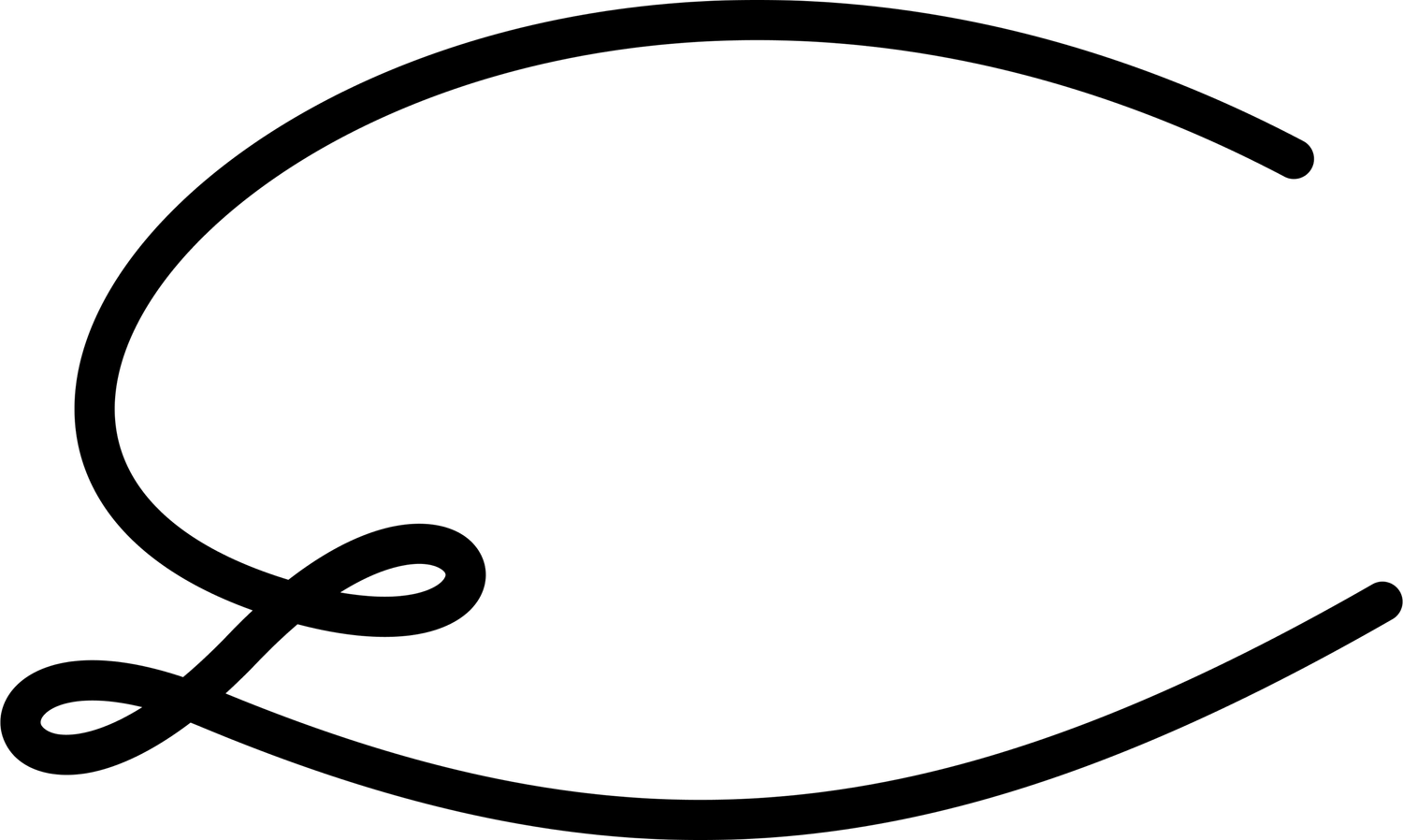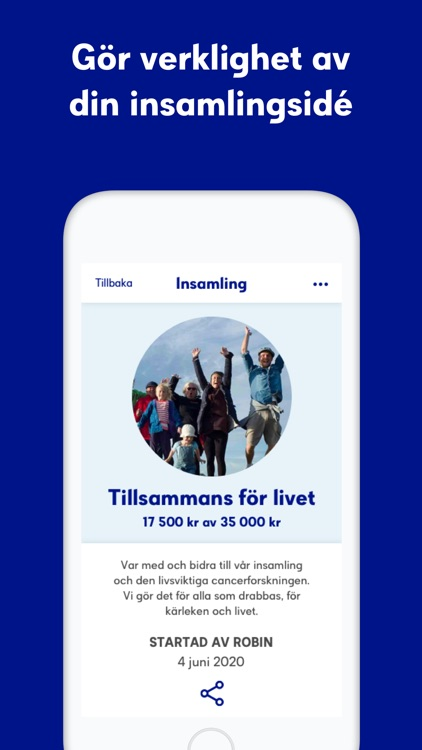Outrun Cancer
The mobile app concept would gather financial support towards cancer research, lower the participants' risk of getting cancer, and improve their overall health by staying active.
Role
Project Lead
Team
6 people
Client
Cancerfonden
Time
5 weeks
DESCRIPTION
Outrun Cancer is a mobile app concept that encourages companies to purchase distance packages from the Cancer Foundation by giving the companies exposure while being associated with a good cause.
The purchase of the distance package goes to the Cancer Foundation as donations towards cancer research. The distance is set as a challenge in the Outrun Cancer app for any group of individuals to walk together with that company. Other than participating in companies' challenges for a good cause, individuals are also incentivised through various offers and discounts rewarded to them for reaching goals from the companies they walk with.

INTRODUCTION
This project gave us the opportunity to create a mobile concept for increasing donations to the Cancer Foundation. Three distinct directions were proposed for exploration: enhancing corporate involvement, expanding the Cancer Fondation gift shop, and innovating the different ways of giving. Our group focused on a combination - activating individuals and businesses through a new donation method.
The Cancer Foundation
The Cancer Foundation (known as Cancerfonden in Sweden) operates as an independent non-profit organisation without government funding, relying solely on donations from individuals and corporations. At the time, corporate partnerships contributed significantly less when compared to other fundraising methods, such as public and individual donations. Nevertheless, the Cancer Foundation saw the greatest potential in corporate financial contributions, which partly drove our group's focus on this aspect.
RESEARCH
Desktop Research
The desktop research gave us an understanding of the drivers behind donating to a good cause and promoting better health. Alongside this, we evaluated how current company donations are done and the incentives behind them and discovered a potential for improvements.
Findings
Corporate donations significantly lagged behind individual contributions.
Increased physical activity among individuals correlated with a reduced risk of cancer.
The team conducted a competitor analysis to compare these features with other exercise apps like Stepler and Runkeeper, focusing on feature offerings and information presentations to gain insights and inspiration for the OutrunCancer app.
Competitor Analysis
Heuristic Evaluation
In addition to our competitor analysis, we performed a heuristic evaluation of Löpbandet (the Cancer Foundation's preexisting exercise app) as a source of inspiration for our mobile app concept. The evaluation revealed opportunities for improvement in the app's design, as well as valuable insights on elements like colour schemes, menu choices, and specific features for our mobile app concept.
Surveys
Our research focused on corporate donations to the Cancer Foundation and charity walking. We conducted two surveys:
Aimed to gauge interest in our concept and identify potential users. It revealed a strong interest in the concept.
Survey 1
Focused on collecting data about walking, revealing that younger individuals were more motivated to walk for charity when offered incentives.
Survey 2
In total, we received 282 responses from both surveys. Our findings highlighted the effectiveness of incentives in engaging and motivating a younger audience for charity walking.
Outcome
Workshop
With the help of a workshop with ten potential users we could determine which features the prototype should include. Participants ranked features using the MoSCoW prioritization technique, leading to three key findings:
The need for an easy walk start.
A clear overview of businesses and their challenges.
Distance tracking.

CREATING CONCEPT
Information Architecture
Prior to sketching, we crafted a sitemap to structure the desired functionalities and provide a foundation for our sketches. This sitemap offered essential insights into app layout and navigation.
Sketching
The sketches for the application's features started on pen and paper, before later moving on to Balsamiq. Feedback from the group and potential users was used to refine the concept through multiple iterations. All features required data support, and those lacking it were tested with potential users using a Co-design approach to generate new ideas. Users provided valuable feedback, influencing later iterations.
Low-fidelity Prototype
After creating the initial layout, we transformed sketches into basic Balsamiq wireframes. Users then offered valuable feedback during a critique session, leading to enhancements. This included establishing a clear information hierarchy to improve user goals.
High-fidelity Prototype
After incorporating the feedback, we crafted a high-fidelity interactive prototype in Figma, infusing the Cancer Foundation's brand into the mobile app concept.
DESIGN SOLUTION
Outrun Cancer
A mobile app concept that both enhances company donations to the Cancer Foundation and motivates individuals to a more active and healthier lifestyle.
Companies get:
Exposure to new customers.
Increased credibility and likeability.
Individuals get:
Exclusive offers and discounts on products and services.
Reduced cancer risk through an active lifestyle.
KEY TAKEAWAYS
Stay on track
During the course of this project, I consistently conducted daily Scrum meetings with team members, fostering an agile work culture. This approach proved invaluable in realigning our efforts to enhance our sprint focus. In our project management, we utilised Trello, which provided us with a clear, at-a-glance understanding of our tasks in terms of what needed to be accomplished, what was actively in progress, and what had already been successfully completed.
Delegate deliberately
By assigning distinct tasks to team members based on their expertise, we instilled a culture of ownership and accountability. This method not only clarified roles and responsibilities but also harnessed each team member's unique strengths, ultimately enhancing the efficiency and effectiveness of our project execution.
Don´t boss. Lead.
My role as project lead did not mean I was the boss. It meant I had the responsibility to help my teammates to the finish line by supporting where support was needed. In this case, I assisted the visual designer in developing the wireframes to ensure on-time deliverables.
THANK YOU
Team members
Elena Cancro
Isabel Larsson
Albin Qvist
Philip Subiabre
Amelia Voksepp
Supervisors
Dimitrios Gkouskos
Mats Lindqvist
Erik Segerström
Cancerfonden
Meron Abraham
Ignacio Varas
Marie Segerberg


















